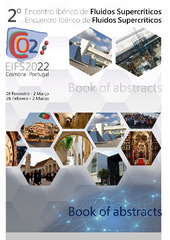Приказ основних података о документу
Scale-up of supercritical CO2 extraction process for production of milk thistle extract
| dc.creator | Milovanović, Stoja | |
| dc.creator | Kamiński, Piotr | |
| dc.creator | Dębczak, Agnieszka | |
| dc.creator | Klimkowska, Kamila | |
| dc.creator | Florkowski, Grzegorz | |
| dc.creator | Tyśkiewicz, Katarzyna | |
| dc.creator | Konkol, Marcin | |
| dc.date.accessioned | 2023-11-24T08:11:58Z | |
| dc.date.available | 2023-11-24T08:11:58Z | |
| dc.date.issued | 2022 | |
| dc.identifier.isbn | 978-84-09-38644-4 | |
| dc.identifier.uri | http://TechnoRep.tmf.bg.ac.rs/handle/123456789/6901 | |
| dc.description.abstract | Milk thistle (Silybum marianum, Asteraceae) is a plant used in traditional medicine from ancient times mostly for treatment of liver disorders [1,2]. Nowadays it is an industrially valuable crop for preparation of herbal supplements reaching total sales of 16 million USD in the USA market [2]. The separation of valuable bioactive compounds from plant materials can be performed by several methods using organic and inorganic solvents. Nevertheless, supercritical fluid extraction (SFE) that employs CO2 is considered a green alternative to other conventional extraction methods. In order to be economically viable, the SFE process should be optimized by selection of appropriate pressure and temperature conditions followed by a scale-up. The scale-up of the SFE process can be performed by keeping constant: the ratio of scCO2 flow rate to mass of bed raw material, the ratio of bed length and bed diameter or dimensionless number such as Reynolds number [3]. This study presents the scale-up of the SFE process, first by selection of optimal pressure (100, 200 and 300 bar) at moderate temperature of 40 °C using a lab scale unit (0.6 L), following by selection of optimal CO2 consumption per used plant material as well as optimal ratio of plant material mass per volume of extractor. Optimal parameters were further tested using a semi-industrial scale unit (40 L). The highest extraction yield obtained was 27%. The performed scale-up study showed a good agreement between lab and pilot scale units. The qualitative analysis performed using GC/MS showed that obtained extracts contained around 80% of unsaturated fatty acids. The quantitative analysis performed using GC/FID confirmed that predominant fatty acids were oleic and linoleic acids with a content in the range of 191-234 mg/g and 445-514 mg/g, respectively (depending on the SFE pressure). Total phenolic compounds were estimated in each extract by the Folin–Ciocalteu assay reaching ca. 90 mg GAE/g. The free radical scavenging capacity was analyzed by the DPPH assay showing value of IC50 (concentration of extract required for the 50% decrease in absorbance of the blank) to be ca. 13 mg/mL. | sr |
| dc.language.iso | en | sr |
| dc.publisher | Coimbra : Universidade, Faculty of Sciences and Technology | sr |
| dc.relation | COSTAction "Green Chemical Engineering Network towards upscaling sustainable processes" (GREENERING ref. CA18224) funded by the European Commission | sr |
| dc.relation | info:eu-repo/grantAgreement/MESTD/inst-2020/200135/RS// | sr |
| dc.rights | openAccess | sr |
| dc.rights.uri | https://creativecommons.org/licenses/by-nc-sa/4.0/ | |
| dc.source | Book of Abstracts / 2nd Iberian Meeting on Supercritical Fluids (2º Encontro Ibérico de Fluidos Supercríticos) (EIFS2022), Coimbra, Portugal, 28 February - 2 March 2022 | sr |
| dc.title | Scale-up of supercritical CO2 extraction process for production of milk thistle extract | sr |
| dc.type | conferenceObject | sr |
| dc.rights.license | BY-NC-SA | sr |
| dc.citation.epage | 29 | |
| dc.citation.spage | 28 | |
| dc.identifier.fulltext | http://TechnoRep.tmf.bg.ac.rs/bitstream/id/18810/Scale_up_of_supercritical_pub_2022.pdf | |
| dc.identifier.rcub | https://hdl.handle.net/21.15107/rcub_technorep_6901 | |
| dc.type.version | publishedVersion | sr |

